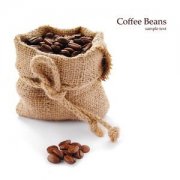Introduction of Coffee Bean producing areas in Harald, Ethiopia
At 1600 to 2400 meters above sea level, the Harald Heights in eastern Egypt is one of the highest elevation areas for human coffee cultivation (some even claim to be as high as 2000 to 2700 meters), overlooking the Yemeni ports of Mocha and Aden across the Gulf of Aden. For centuries, Harald coffee farmers, using camels, donkeys or horse-drawn carriages, risked being besieged by hyenas to the downhill port of Djibouti and shipped them to the Yemeni port of Moka to European countries. Harald's coffee history is much older than Yega Xuefei, and the soil and water, climate, treatment and flavor are also different from Yega Xuefei. Harald is a dry and cool climate, the most suitable for sun treatment, the flavor is similar to the Yemeni mocha across the bay, so Harald is also known as Harald mocha. Harald's beans are mostly long-bodied beans, which are obviously different from the short round beans in the sun.
In the history of coffee, Yemeni mocha is more famous than Harar mocha. Although the Yemeni coffee variety comes from Harald's long beans, the port of Mocha has become a distribution center for European powers to seize coffee resources in Africa, thus contributing to the reputation of mocha coffee, and Harald has become a hero behind the scenes.
It was not until ⊙, 188, when French poetic prodigy Rambo thought that the mocha was so hot that he moved to the dry Harald to trade coffee, and Harald gradually became famous internationally.
Although not as clean as Yega Xuefei, it is miscellaneous and not messy. This is the so-called Harald flavor, which is suitable for both deep and shallow baking. I personally prefer to bake until the beginning of the second explosion, the unique fruit flavor of the sun is stronger, if I prefer the sour aroma of blueberries, I can't expect the same quality every year. Have a good drink this year, but you may not get what you want next year. You should be prepared psychologically.

Important Notice :
前街咖啡 FrontStreet Coffee has moved to new addredd:
FrontStreet Coffee Address: 315,Donghua East Road,GuangZhou
Tel:020 38364473
- Prev

Common sense of Coffee in Sidamo producing area of Ethiopian Coffee
According to the above four different modes of production, Ethiopian coffee can be divided into nine major coffee producing areas, including five boutique coffee areas: Sidamo, Yegashefi, Harald, Lim and Lekampu. and four general commercial bean producing areas: Gemma, Irugbo, Tibby and Bekaa. The sun or water washing methods are used in each district, and different treatment methods also affect the flavor.
- Next

Coffee bean producing area Ethiopian coffee Lim producing area
At 1200-1900 meters above sea level, the average planting height in this area is significantly lower than that in other areas, but there is still fine coffee. Lim producing area is located in the southwest of the capital, and Gemma can be reached further south. Both belong to the Kafa Forest, north of Lim and south of Gemma. Lim is mostly washed with water beans, orange fragrance is strong, sour and lively, the flavor is similar to water washing Yega Xuefei. Lim also has a small amount of coffee.
Related
- Beginners will see the "Coffee pull flower" guide!
- What is the difference between ice blog purified milk and ordinary milk coffee?
- Why is the Philippines the largest producer of crops in Liberia?
- For coffee extraction, should the fine powder be retained?
- How does extracted espresso fill pressed powder? How much strength does it take to press the powder?
- How to make jasmine cold extract coffee? Is the jasmine + latte good?
- Will this little toy really make the coffee taste better? How does Lily Drip affect coffee extraction?
- Will the action of slapping the filter cup also affect coffee extraction?
- What's the difference between powder-to-water ratio and powder-to-liquid ratio?
- What is the Ethiopian local species? What does it have to do with Heirloom native species?

